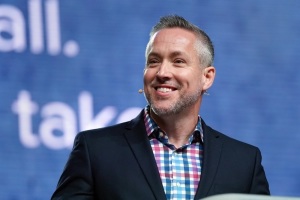5 Innovative Ideas for School Choice Reforms

WASHINGTON – Education experts proposed five innovative ideas for reforming K-12 education to free up the system for dynamic growth through the small government "School Choice" movement.
One scholar claimed the current system which focuses on nebulous "quality" enables government bureaucrats to misuse parents and students. "Forget about 'quality' — all the regulators are trying to take quality and make it their own, putting us into a little box," declared Kara Kerwin, president of the Center for Education Reform (CER), at The American Enterprise Institute (AEI) on Thursday. Kerwin argued that, instead of "quality," education reformers should focus on promoting success.
Michael Q. McShane, research fellow in education policy studies at AEI, warned about the dangers of switching from a public monopoly to a free market in industry and education. Russia, for example, privatized too quickly, allowing the oligarchs to take control of industry, McShane argued. For successful deregulation, a country needs liberalization, stabilization, and institution building.
Liberalization involves the basic freeing up of the system — "increasing school choice through charter schools, vouchers, and education savings accounts," McShane explained. Once this occurs, a country will face inflation and unemployment, so the government needs to establish clear and transparent rules. "That's one role that the government ought to play," the small-government advocate admitted. Finally, the system needs to build institutions well and slowly, to train workers for the new environment.
McShane warned that deregulation, for all the good it does, will also result in unemployment, creative destruction (where some companies are beaten by others and go out of business), and a surprising list of "winners and losers." Nevertheless, he firmly supported smaller government education reform.
Below is a list of the 5 reforms the panelists advocated for.
1. Education Savings Accounts
"Our education system needs to get better, faster, and more cost effective, all at the same time," declared Matthew Ladner, senior advisor of Policy and Research at the Foundation for Excellence in Education. While change of this sort happens frequently in other spheres of life — especially in the technology industry — it is "not normal for K-12 education," Ladner explained. In order to do this, he argued, "we want to put people in charge of education, we want to broaden the definition of what a school is."
Ladner pointed to the Empowerment Scholarships Program in Arizona, which he dubbed "School Vouchers 2.0." Instead of a coupon allowing parents to choose a school for their child, he explained, it is an account that can only be used for education — private tutors, online programs, private school tuition, public school courses, community college, and even future college expenses. Ladner called this flexibility "the key to getting parents to be careful shoppers," so they maximize their opportunities.
"I want to put parents in charge of the restructuring of education, and that's how I think we get from a public education system that rolls like the Flintstones to one that flies like the Jetsons," he explained.
2. Teacher-Entrepreneurs

Kerwin argued that "a real educator has to be like an MBA, and think about markets, their customers, and the end product — what would make a child successful." If teachers think like entrepreneurs, they will provide the best education for the lowest cost.
Competition drives entrepreneurs to provide the best quality product at the lowest cost, so they get business and make a profit. In a similar way, school choice would lead teachers to give kids the best "bang for their buck," since they have to compete with other teachers and schools. Teachers would do a better job teaching kids at a lower cost if they thought like entrepreneurs.
3. School Networks, Incubation
"We need to bring the charter operating model to private school choice," declared Andy Smarick, partner at Bellwether Education Partners. Smarick pointed out that three-quarters of Catholic private schools are run by the parish, and the principal does all the hiring, firing, building management, and other work to keep the school running. If these private schools followed the example of Charter Management Organizations (CMOs), however, that would take these burdens off the principals.
Charter schools have developed school networks, where a central group manages all the administrative work, such as hiring and firing, renewing building leases, and updating contracts. The only difficulty with applying it to private schools, Smarick noted, is money — the D.C. Center City Consortium was able to create a private school network, but it failed due to insufficient funding.
School networks enable incubation — a process where a larger group identifies school leaders to start a new school, provides money for them, and guides the leaders through the process.
4. Independent Charter School Authorization

Smarick also argued for independent charter school authorization, where groups other than the school district authorizes charter schools. "If the district is put in charge of authorizing charter schools, there's this natural cap [of charter schools] of about 15 or 20 percent — they never allow it to get above that," he explained.
Smarick listed successful school districts where a group other than the school district authorized charter schools. In Boston, "kids are learning a full year more in reading and math compared to their peers in traditional public schools," he explained. "Who was the authorizer in Massachusetts? The state, not the district."
5. Educational Options
"Unless we have a market where there's a million different possible choices, and multiple costs, we are setting the price as opposed to letting the market set the price for us," Kerwin claimed. In order to give parents the ability to get the best education at the lowest price, there must be competition between options, the CER president explained.
In addition to the online, public, and private options involved in education savings accounts, Ladner argued for the virtue of new technology and classical education methods. "I think the broad theme in the next few years is a thoughtful substitution of technology for labor in such a way that increases productivity and keeps the human touch," Ladner said.
Admitting that two of his children attend a classical school (Great Hearts in Phoenix), whose "notion of advanced technology might be the eraser," Ladner added, "I think there's absolutely a role for the old-fashioned classics education, and there seems to be an almost insatiable parental demand for it." Smarick agreed.
Ladner also praised the Home School Movement as "the fastest growing choice option in the country," explaining that universities have started demanding students educated at home. Kerwin called homeschooling families "a huge incredible force," for innovation in K-12 education.





























